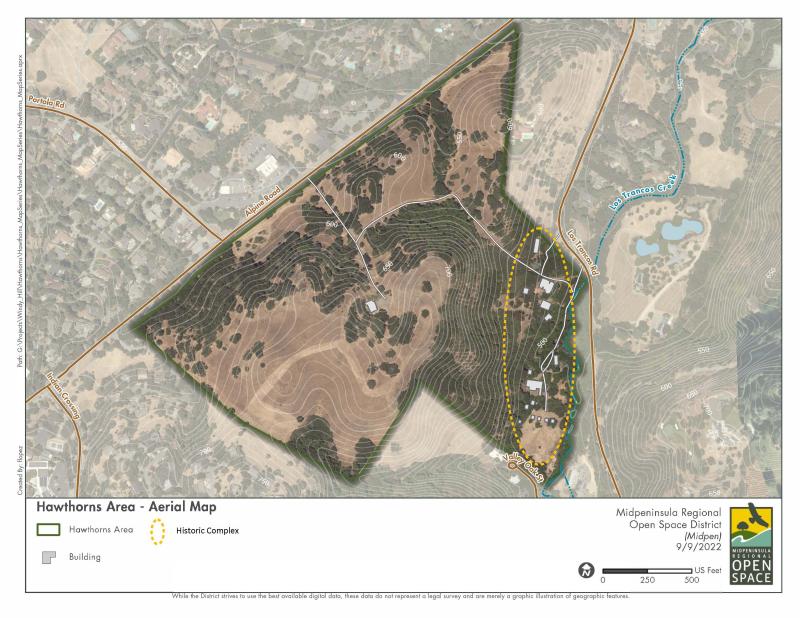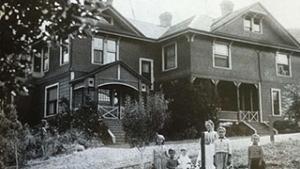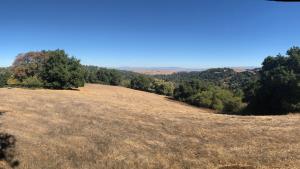The 79-acre Hawthorns Area of Windy Hill Open Space Preserve was protected from development when it was gifted to the Midpeninsula Regional Open Space District in 2011. The Hawthorns Historic Complex (Historic Complex) is approximately 13 acres located within the Hawthorns Area and includes an old olive orchard and several structures that date back to the late 1800s.
The Historic Complex planning effort is a separate process from the Hawthorns Area Plan and Public Access Working Group effort. Having two distinct planning projects provides Midpen with the flexibility to plan for public access for the Hawthorns Area on a separate timeline, as planning for the future use and management of the Historic Complex will be a lengthier process. Midpen will evaluate potential opportunities for public access connections between the Hawthorns Area and Historic Complex while preparing the Hawthorns Area Plan.
The Historic Complex represents the social, agricultural, and architectural history of the San Francisco Peninsula estate property and retains historical integrity. Planning for the long-term use and management of this unique cultural resource began in early 2024.
**In the printed version of the Fall 2024 Views, there was a mistake on the Hawthorns article regarding architect Julia Morgan as the designer for the house, cottage, barn and garage at the Hawthorns Historic Complex. Only the garage was reportedly designed by Morgan. We apologize for this misattribution.








